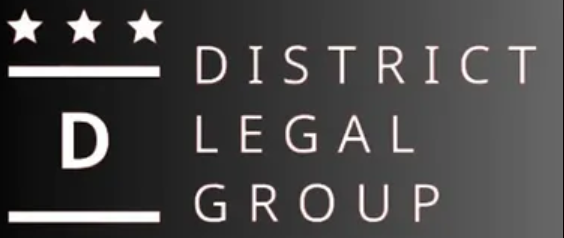What to do when in a car accident
October 29, 2024
This is a subtitle for your new post
What to do when in a car accident:
- Ensure Safety: Check for injuries and move to a safe location if possible.
- Call for Help: Dial emergency services to report the accident and request medical assistance if needed.
- Check on Others: Verify if other parties involved are okay and offer help if safe to do so.
- Avoid Discussing Fault: Do not admit fault or discuss details of the accident with others at the scene.
- Document the Scene: Take photos of the vehicles, damages, and the surrounding area. Gather details like license plate numbers, names, and contact information of others involved.
- File a Police Report: If required, ensure a police report is filed, as it can be important for insurance claims.
- Notify Your Insurance: Contact your insurance company to report the accident and provide necessary details.
- Seek Medical Attention: Even if you feel fine, consider seeing a doctor, as some injuries may not be immediately apparent.
Taking these steps can help ensure your safety and facilitate the claims process.

1. AI Cannot Provide Personalized Legal Advice AI tools can offer general information about divorce laws, child custody, spousal support, and property division, but they cannot replace a lawyer’s personalized advice. Divorce cases often involve unique circumstances, emotional complexities, and legal nuances that an AI cannot fully address. If your case involves disputes over assets, child custody, or spousal support, it’s best to consult a qualified attorney. 2. Accuracy and Reliability Vary AI tools pull information from various sources, but not all of them are up to date or jurisdiction-specific. Divorce laws differ by state and can change over time. Relying on an AI without verifying the accuracy of its information could lead to costly mistakes. Always cross-check legal documents and procedures with official court websites or consult a professional. 3. AI Can Help with Forms and Filing, But You Must Ensure Compliance Many AI-powered platforms assist with filling out divorce forms, drafting agreements, and even filing paperwork online. However, courts have strict requirements for formatting, deadlines, and procedural rules. If documents are incomplete or incorrect, they may be rejected, delaying your case. It’s crucial to review everything carefully and, if possible, have a legal professional double-check your filings. 4. AI Cannot Negotiate or Advocate for You Divorce often involves negotiations over property division, child custody, and financial support. AI cannot negotiate with your spouse or their attorney on your behalf. While AI can suggest possible settlement terms, it lacks the ability to advocate for your best interests in court or during mediation. If negotiations become contentious, legal representation may be necessary. 5. Confidentiality and Data Security Risks When using AI-powered legal tools, be mindful of data privacy. Some platforms store personal information, and not all have strong security measures. Always check the privacy policy of any AI tool you use, and avoid sharing sensitive details unless you’re confident in the platform’s security. If confidentiality is a major concern, consulting a lawyer directly may be a safer option. Final Thoughts AI can be a useful resource for those navigating a divorce without an attorney, particularly for understanding legal terms, generating documents, and organizing a case strategy. However, it has limitations. If your divorce is complex or contentious, seeking professional legal guidance is highly recommended to protect your rights and interests.

When starting a business, one of the most important decisions you’ll make is choosing the right business structure. Two common options are Limited Liability Companies (LLCs) and S Corporations (S Corps). While both provide liability protection and tax benefits, they differ in several ways. Here’s a breakdown of their key differences to help you determine which might be best for your business.

Workplace discrimination is an unfortunate reality that can impact career opportunities, mental health, and financial stability. If you believe you’ve been discriminated against at work based on race, color, religion, sex (including pregnancy, gender identity, and sexual orientation), national origin, age (40 or older), disability, or genetic information, you have the right to file a complaint with the Equal Employment Opportunity Commission (EEOC). But when should you take that step?

In Virginia, the court considers several factors when determining child custody, focusing on the best interests of the child. Here are some key factors: The child’s age, physical and mental condition: Younger children or those with special needs may require different arrangements. The child’s relationship with each parent: The court looks at how the child bonds with each parent, including emotional ties, involvement, and care provided. The parents’ ability to cooperate: The court assesses how well the parents can communicate and work together in making decisions for the child. The mental and physical health of the parents: A parent’s ability to care for the child depends on their mental and physical condition. The child’s preference (if of sufficient age and maturity): A child’s wishes may be considered, although it is not the sole determining factor. The stability of the home environment: The court evaluates whether the child will have a stable, nurturing, and consistent home in each parent’s care. History of family abuse or neglect: Any history of domestic violence, neglect, or abuse is a significant factor in custody decisions. Each parent’s involvement in the child’s life: The court considers which parent has been more involved in school, extracurricular activities, and daily routines. Any other factors relevant to the child’s well-being: This could include things like work schedules, availability for caregiving, or the impact of relocation. Virginia law prioritizes the child’s overall well-being in custody decisions, aiming for an arrangement that supports their emotional, psychological, and physical needs.

When pursuing an employment law case, it’s crucial to understand what types of damages you might recover and how courts evaluate the value of your case. While employment disputes often stem from emotional and financial turmoil, it’s important to approach your case with realistic expectations. Let’s explore what factors courts and juries consider when determining damages and what you, as a plaintiff, should keep in mind. Types of Damages in Employment Law Cases Employment law cases often involve multiple types of damages, including: 1. Back Pay What it is: Compensation for wages lost from the time of termination or adverse action to the date of trial or settlement. How it’s calculated: Courts look at your salary, benefits, and bonuses to determine what you would have earned had the wrongful action not occurred. However, you’re required to mitigate damages by seeking comparable employment during this period. 2. Front Pay What it is: Future wages you are unable to earn due to the wrongful termination or discrimination. How it’s calculated: Courts evaluate how long it will take for you to find comparable employment or reach retirement age, factoring in your skills, industry trends, and job market conditions. 3. Emotional Distress Damages What it is : Compensation for mental anguish, humiliation, or emotional suffering caused by the employer’s conduct. What courts consider: Testimonies, medical records, or expert reports that demonstrate how the employer’s actions affected your mental health. 4. Punitive Damages What it is: Damages meant to punish egregious or malicious behavior by the employer. When awarded: These are typically reserved for cases where the employer’s conduct was intentional, reckless, or showed a willful disregard for your rights. 5. Attorney’s Fees and Costs Many employment statutes allow for the recovery of attorney’s fees and court costs if you prevail in your case, which can significantly increase the value of a claim. What Courts and Juries Look at When Evaluating Damages 1. Strength of Evidence Key questions: Is there clear evidence of wrongful conduct? Are the employer’s actions well-documented (e.g., emails, policies, or witness testimony)? Stronger evidence increases the likelihood of success and may result in higher damages. 2. Plaintiff’s Mitigation Efforts Courts expect you to make reasonable efforts to mitigate your losses by finding new employment. If you fail to do so, the court or jury may reduce your damages significantly. 3. Nature and Severity of the Employer’s Conduct Cases involving blatant discrimination, harassment, or retaliation often result in higher damages, particularly if there’s evidence of systemic or intentional wrongdoing. 4. Impact on the Plaintiff Emotional distress damages depend heavily on how the employer’s actions affected your life. Medical records, therapy notes, or testimony from friends and family can be critical in demonstrating this impact. 5. Comparable Verdicts and Settlements Courts often look at prior cases in the same jurisdiction to gauge what similar claims have settled for or what juries have awarded. This provides a benchmark for evaluating damages. 6. Credibility of the Plaintiff and Witnesses Juries are influenced by how believable and sympathetic you are as a plaintiff. Inconsistencies in your story or gaps in your evidence can harm your case’s value. 7. Employer’s Resources The financial standing of the employer can impact the amount of punitive damages awarded. Wealthier employers may face higher punitive damages than smaller businesses. Setting Realistic Expectations Every Case is Unique: While legal precedent can provide a framework, no two cases are identical. Factors such as jurisdiction, employer policies, and the personalities of key players (e.g., the judge or jury) all influence outcomes. Litigation is Unpredictable: Trials are inherently uncertain, and while an attorney may provide an estimate of your case’s value, it’s impossible to guarantee a specific outcome. Settlements vs. Trials: Many employment cases settle out of court. Settlements are often lower than potential jury verdicts but provide faster resolution and eliminate the risk of losing at trial. Final Thoughts Understanding how courts and juries evaluate damages is essential for setting realistic expectations about the potential value of your employment law case. A strong case supported by evidence, credible testimony, and clear documentation of damages is more likely to yield favorable results. If you’re considering pursuing an employment law claim, consulting an experienced attorney can help you navigate these complex factors and develop a strategy to maximize your recovery while managing expectations.

What evidence should I use in my custody trial: Parenting Plans: Detailed plans showing how each parent intends to meet the child’s needs. Communication Records: Text messages, emails, or other correspondence that demonstrate cooperation or conflict. Witness Testimonies: Statements from family members, friends, or professionals who can speak to each parent’s parenting abilities. Child’s Preferences: Depending on their age, the child’s wishes may be considered. School and Medical Records: Evidence showing each parent’s involvement in the child’s education and health care. Domestic Violence Records: Any evidence of abuse can significantly impact custody decisions. Financial Stability: Proof of each parent’s ability to provide for the child’s needs. Character References: Letters from people who can attest to each parent’s character and parenting style. Each case is unique, so the relevance of evidence may vary. Consulting with a legal professional is crucial for tailored advice.

When suing your employer as a federal contractor, there are several key considerations to keep in mind. Here are three crucial factors: 1. Whistleblower Protections under Federal Law Federal contractors are protected by specific whistleblower laws, such as the Whistleblower Protection Act (WPA) and False Claims Act (FCA) , which safeguard employees who report illegal activities like fraud, waste, or abuse involving government contracts. Before suing, it is essential to assess whether your claim falls under these protections and if you’ve followed proper internal reporting channels. Failing to do so may weaken your case. 2. Employment Contracts and Arbitration Clauses Review your employment agreement for arbitration clauses, which are common in federal contractor employment contracts. Arbitration clauses often require disputes to be resolved outside of court through arbitration. If such a clause exists, you may need to pursue arbitration rather than litigation. Understanding how this clause impacts your ability to sue in court is crucial. 3. Sovereign Immunity and Government-Related Restrictions As a federal contractor, there are limitations when suing over work involving the federal government. Sovereign immunity protects the U.S. government from being sued without its consent, which can indirectly affect lawsuits related to federal contracts. You need to consider if your lawsuit implicates the government, either directly or through its contractors, which may complicate your case. Carefully assessing these factors with legal advice is critical to understanding your rights and the feasibility of a lawsuit.

Wrongful termination is a significant issue in employment law, arising when an employee is fired in violation of legal rights or public policy. Though most employment in the United States is "at-will," meaning employers can terminate employees for nearly any reason or no reason at all, there are critical exceptions to this rule. Wrongful termination occurs when a termination breaches federal, state, or local laws, an employment contract, or public policy. Understanding these exceptions can help both employers and employees protect their rights.

